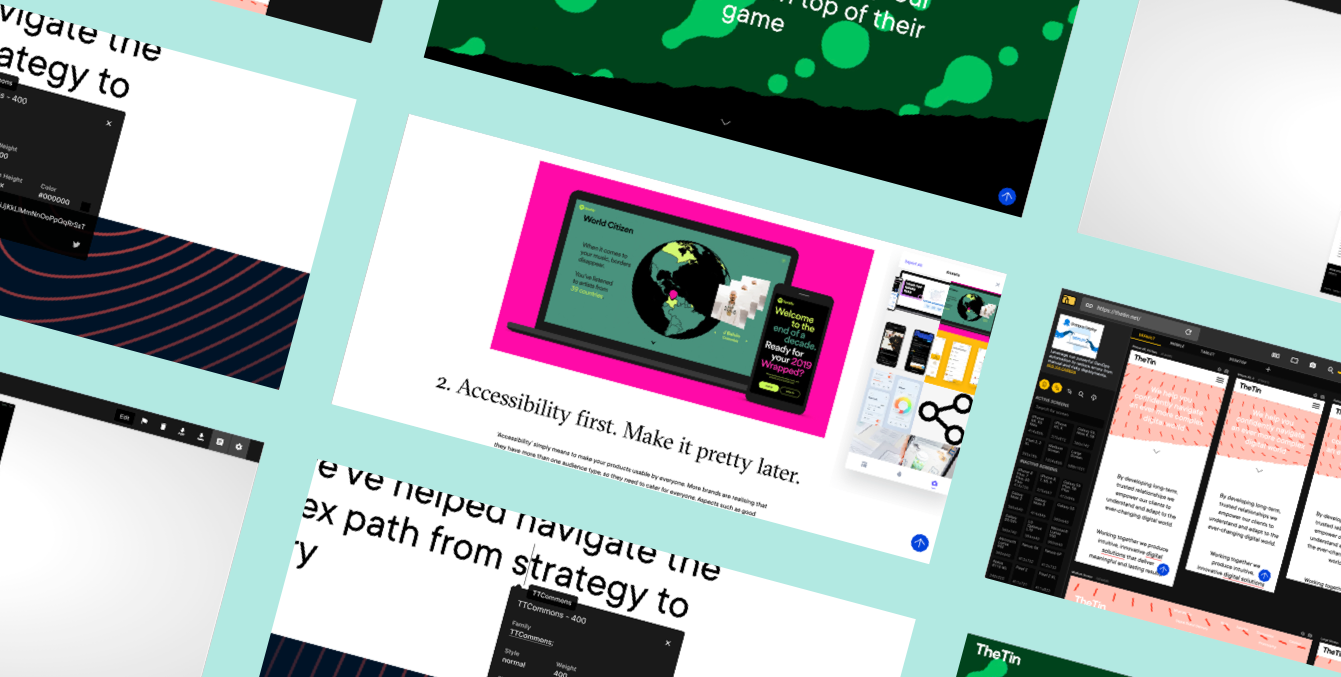Insights
The metaverse. What does it actually mean?
7 minute read
15 November 2022
The metaverse is the buzzword that everyone's been talking about - but what is it really? And what could it mean for you and your business?
At one of our recent TinnovationLive events we explored all things metaverse and debated whether it was ‘value or vanity’ or a ‘fad or forever’...
We’ve also recently developed, tested and created our own metaverse presence and hope that by sharing our experiences and learnings you are able to make better and more informed decisions as to if, when and how, the metaverse fits into your brand and company strategy.
This blog explores where it all started and how it has evolved into what we call the metaverse today.
The origins of 'the metaverse'
The word metaverse was first coined in 1992, in a science fiction novel, Snow Crash by Neal Stephenson.
It was set in a dystopian vision of LA, where the metaverse is seen as a successor to the internet. Neal’s metaverse is an urban environment developed alongside a single road which runs round a featureless black planet, roughly 4 times the size of Earth.
Users enter via VR (virtual reality) headsets and can interact with each other, appearing as avatars. They can own land and develop on it. To navigate, users either walk, drive on the road, or catch a monorail.

Many years later, in 2011 the book Ready Player One portrayed the metaverse more as a socialising and gaming platform, but again, as a fully immersive VR world inhabited by avatars.
Whilst 20 years apart, they are united in how the metaverse is defined - as a virtual world, where people live their lives online through their avatars - and little has changed in that regard since the 90s.
Whilst the buzz is undoubtedly high, it’s not come about overnight.
Second Life: a metaverse ahead of its time?
Second Life came along in 2003 and is still going strong. Users create avatars and join other users in a virtual world rendered in 3D. Users can create, play and explore and it has its own currency. The capabilities are extensive… from countries having embassies, to churches holding services. One of its main uses is education, but any experience can be developed.
There have been over 70 million registered accounts, and today it still gets around 350k new registrations a month, with 200k visiting each day. It fits that original description of a metaverse, and large numbers of people use it daily.
So… Second Life could be considered a metaverse.
Let’s explore the ‘metaverses’ of today
By definition, these are places where you can go to have an experience, or build, in ‘a metaverse’. We’ve explored these by categories.
Category 1: Gaming worlds
Minecraft, Fortnite, Rec Room and Roblox are all phenomenally successful. Having started life aimed at gamers, they have expanded to be content creation tools where the players can craft the worlds and experiences themselves.
Brands have become content creators, and all these platforms have hosted in-game concerts and other events such as product launches, fashion shows and even large-scale Q&As.
- Coke recently launched a new product exclusively in Fortnite
- Burberry have collaborated with Minecraft
- Plus Nike and FIFA have both built worlds in Roblox
They are immersive multi-user experiences in persistent 3D worlds and they boast some staggering statistics on platforms aimed at the teen and young adult market:
- Minecraft has 140m active users and since its release in 2009, it has generated $3 billion
- Rec Room regularly has over 3m VR players every month
- Fortnite isn’t a VR experience, but has 400m registered users with 80m playing at least once a month and it has generated $5.8 billion despite only being 5 years old
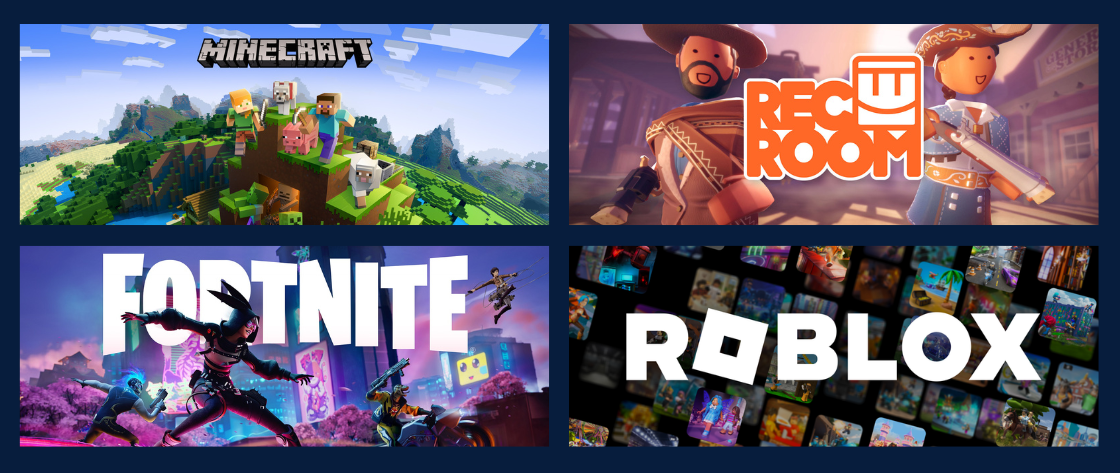
Roblox is less well known unless you have young children as its audience is almost exclusively kids, with 2/3rds under 16. It attracts over 40m daily active users, over 200m each month and it’s valued at over $40 billion.
It’s available on practically every platform and supports VR. It’s a metaverse in every sense of the definition and by far the biggest.
With a massive audience who are growing older, Roblox has recently announced plans for new age guidelines and an ad system, including links through portals in games to branded areas. Nike and FIFA have both built arenas to promote the upcoming World Cup.
Clearly they see the opportunity to become a platform these kids could take with them into adult life.
Category 2: Social spaces
Whilst the game worlds provide users with functionality to meet up and chat - that isn’t the focus for this category. There are another group of platforms which are more focussed on providing social interactions e.g. VR Chat and Meta Horizons.
VR Chat has been around since 2014 and users join as avatars and can interact with other users in thousands of connected worlds. Unlike the gaming experiences, the control over the avatar is enhanced in VR Chat, with the ability to use lip syncing and eye tracking which results in a more lifelike representation of self. Unsurprisingly, the pandemic saw them boost their numbers and they regularly attract over 60,000 a day with over 7m registered users.
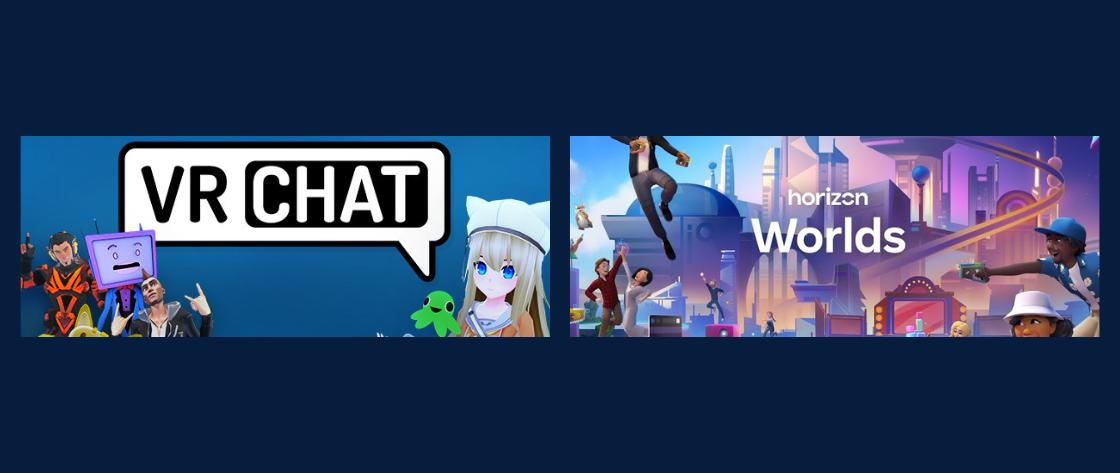
At the other end of the scale there is Horizon Worlds which is Facebook / Meta’s entry which only launched in December 2021. Reports suggest it has less than 200,000 monthly users, and less than 9% of worlds have been visited by more than 50 people. One to watch we suspect and only time will tell if it takes off.
Category 3: Collaborative spaces
The examples we have looked at so far are all apps that have been developed in advanced 3D engines and built with rich experiences in mind. They have been mostly gaming focused however there are also ways to deliver metaverse experiences through the humble web browser.
Mozilla Hubs
Mozilla Hubs is an open source web-based platform which allows you to create multi-user rooms, with portals linking one experience to another. It's free, relatively easy to set up and use, and can be thought of as a social VR tool.
It has its own easy-to-use designer and integrates with other tools to let you import previously developed 3d assets you may already have. The rooms you create can simply be shared via a URL - no downloads, no installations. You can let Mozilla host the room for you, which is the default, or deploy it to a private server.
You can’t create games, interactivity is relatively limited in that regard - but you can import 3d assets, images, videos and sound - and users can communicate and collaborate. It definitely fits the description of a metaverse.
Of course WebVR, which powers Hubs, has been around for a number of years. There are many frameworks to kickstart projects, including multi-user experiences - but building from scratch takes time so something like Hubs is great for kickstarting and experimenting.
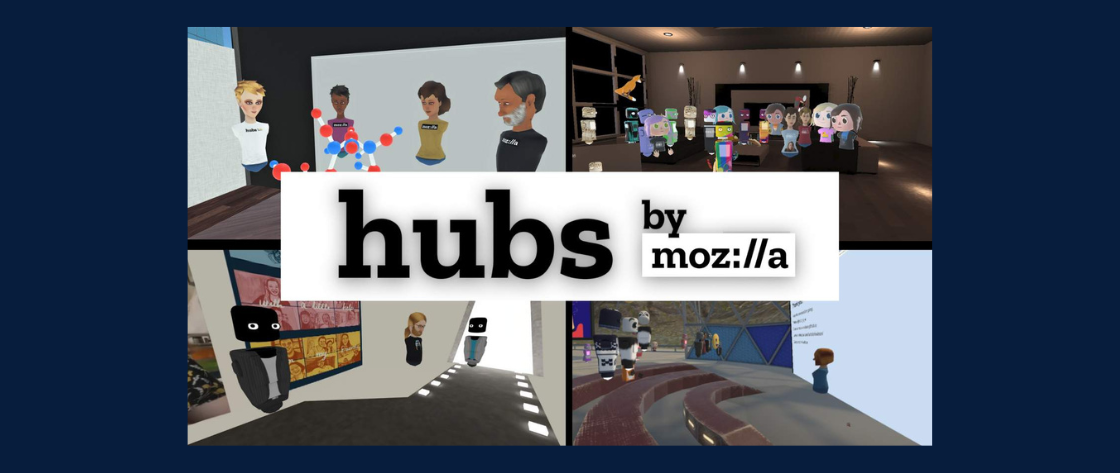
Web 3 - Sandbox & Decentraland
A lot of the metaverse buzz was being driven by the Web3 community, and we’ve explored some of the challenges they need to overcome, not least the problem of interoperability and taking assets into the metaverse - whether multiple worlds, or one singular entity.
There are a lot of crypto-based projects claiming to be metaverses, but in reality there are currently only a few which can currently be visited.
The Sandbox and Decentraland are the two main ones currently up and running.
In both, users can buy land using crypto currencies, on which they can then build out experiences. These could be event spaces, educational spaces, games, or just places to hang out.
As well as land, users can buy items, either for their worlds or for use on, or with, their avatars. Of course, avatars can be bought too, with jpegs of monkeys going for around $100k.
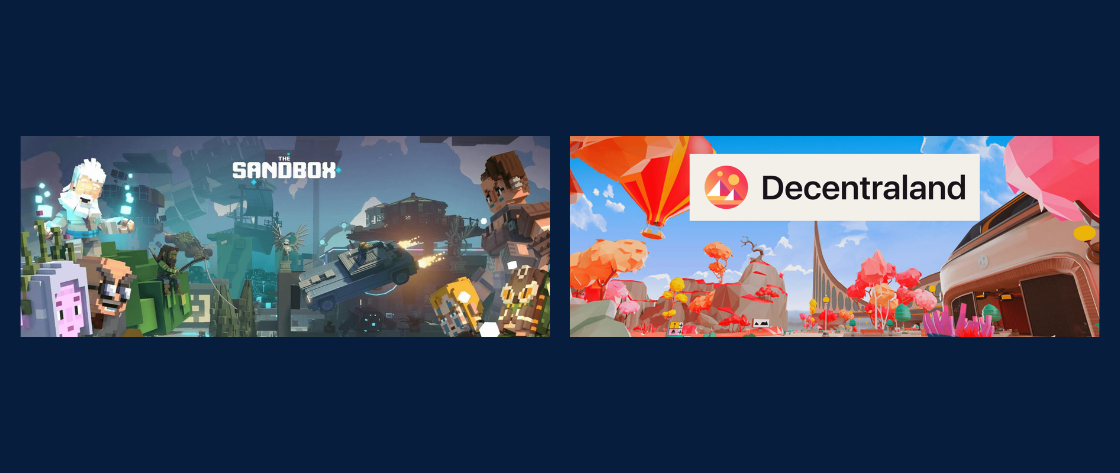
You can enter them without spending anything, but the promise of these platforms is value creation and monetisation: users can create items themselves (by paying a fee), to sell to other users.
At the moment though, that isn’t really playing out… Sandbox claimed to have 300,000 monthly active users back in November. This is not much more than Second Life’s daily visitors, and insignificant to the likes of the gaming worlds who get visitor numbers in the tens or hundreds of millions - but it’s still a sizeable number. However, less than .1% of those Sandbox users were buying or selling items at that time.
These 2 platforms are not really decentralised, and the items aren’t interoperable, but you have to start somewhere and there are groups forming to look at ways to create standards. This might improve things but it may take some time.
So, do we already have the metaverse or metaverse worlds today?
Well that depends on who you talk to. In science fiction, there tends to be one single universal immersive virtual world. Until then it is more likely a network of 3D virtual worlds.
Lots of people have different opinions about what constitutes a true metaverse, but there are some generally agreed properties that make up a metaverse experience:
- The first is simply that - that a metaverse is an experience. Something with which you interact, not simply view and consume like a page of text or video
- The second is presence - a user has to be able to be present, as an avatar, in order to interact with a metaverse
- The third is that it is multi-user, something that can be experienced by lots of users all at once, with them being able to share, and collaboratively shape that experience
- And finally, persistence. The metaverse still exists when you leave it. It may not be the same when you come back as the interactions of others may have altered it.
In summary… what do we know?
The concept of the metaverse is older than you think.
A lot of things that are calling themselves ‘metaverses’ are sticking to the key descriptions set 30 years ago, but with limited success so far.
The most popular and successful online worlds are video games, even if they're not what are traditionally called ‘metaverses’.
What next?
It’s widely predicted that the metaverse of the future will become an integral part of the internet’s evolution by as soon as 2030. However there are many layers to this process that industries and brands will need to embrace to make this happen.
Look out for our next blog where we explore what this next phase could involve if you want to stake your own claim in the metaverse. Information is power and speed could be of the essence.

